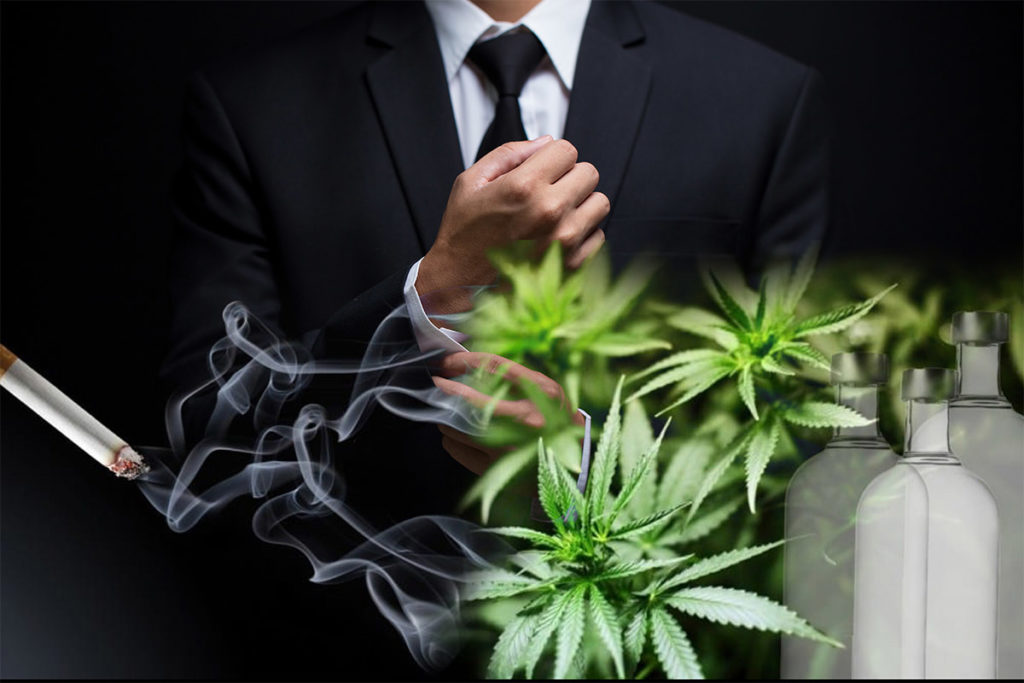This guest expert opinion is written by Kevin Sabet, PhD, the President and CEO of Smart Approaches to Marijuana (SAM).
The United States is currently standing at a crossroads to find ways to reform and mitigate decades of harm that have been experienced by communities of color. One argument put forth is to legalize and commercialize marijuana as a way to address the harms of systemic racism.
But the reality in states that have legalized the drug shows that the awesome promises have not materialized. To the contray:
- Existing social justice issues have been greatly exacerbated;
- Health and safety harms have been fueled, and
- Overwhelmingly white investors and corporate funders have been enriched.
While it’s true that the impact of drug laws—indeed, most of our laws, period—has disproportionally fallen on people of color, it is also critically important to understand the impact of marijuana commercialization on these same communities. This is where an old adage works well: Two wrongs won’t make a right.
There are two main arguments offered for the benefits of legalization and commercialization of marijuana:
- The current laws, rules and regulations are racist and disproportionately harm people of color; and
- Legalization and commercialization will benefit people of color in terms of economic opportunity and prosperity.
Both arguments sound compelling. They are lofty promises. And they are also deeply flawed, disregarding what we already know about the tobacco, alcohol and emerging marijuana industries.
Predatory commercial exploitation
Marijuana legalization, means the corporatization and commercialization of an industry aimed at increasing profits. Big Marijuana seeks to rake in windfall profits off the sale of today’s highly potent and much more addictive marijuana. But what it means to combine profit interest and greed with addictive, psychoactive and otherwise harmful commodities as a “consumer industry” can be seen with Big Tobacco and Big Alcohol. They are systematically, strategically and relentlessly working to hook children and youth on their products. Recently, The World Health Organization (WHO), together with UNICEF and The Lancet (the most prestigious medical journal in the world) have issued a new Commission on the future for the world’s children. The first sentences of the Commission’s Executive Summary directly addressed the dangers of addiction industries:
Despite dramatic improvements in survival, nutrition, and education over recent decades, today’s children face an uncertain future. … predatory commercial practices threaten the health and future of children in every country.”
The WHO, UNICEF and The Lancet Commission on the future for the world’s children
Big Alcohol and Big Tobacco are engaging in ”predatory commercial exploitation”. These addiction giants have a vast track record of specifically targeting disadvantaged communities. And they have already heavily invested in Big Marijuana.
Consider that African-American youth consume less alcohol than other youth (according to the 2010 National Survey on Drug Use and Health, but African Americans suffer more from alcohol-related diseases than other groups, as they age, according to the Center on Alcohol Marketing and Youth (CAMY).
Alcohol use fuels the three leading causes of death among African-American 12 to 20 year-olds: homicide, unintentional injuries (including car crashes), and suicide.
This is an industrially manufactured epidemic, according one of the world’s most renowned researchers in the field of alcohol industry practices, David Jernigan:
The alcohol industry is systematically targeting disadvantaged communities through advertising and access, creating an extraordinary public health problem. Despite the well-known negative health consequences, alcohol products and imagery continue to pervade African-American youth culture and communities.”
Dr. David Jernigan, Professor, Health Law, Policy & Management, Boston University School of Public Health
Economic opportunity: No. Marijuana harm: Yes.
Big Marijuana is already putting the exact same strategies to use.
At a time when serious discussions are being held about how best to build up disadvantaged communities, does anyone really believe communities of color and low-income neighborhoods will actually benefit from the increased sale and promotion of substance abuse? Fewer than 1% of the marijuana storefronts in the country are owned by African-Americans. On top of that, less than 19% of marijuana businesses in the country have investors who are minorities. Even worse, social equity applicants for marijuana licenses are more often than not left to whither on the vine while multi-state, corporate-backed operators snatch up the premium licenses and corner the markets.
And while marijuana stores are overwhelmingly not owned, invested in or operated by people of color, they are overwhelmingly located in communities of color and low-income neighborhoods. That’s the playbook for these types of industries.
Historically, these disadvantaged communities lack many of the resources to combat predatory marketing practices and also often lack adequate access to proper drug treatment facilities, thereby exposing community members to an increased likelihood of substance abuse with limited resources to combat the consequences.
Even the American Civil Liberties Union, a group that has endorsed marijuana legalization and commercialization, recently released a study finding that marijuana legalization has failed to deliver on its supporters’ grand promises of social justice.
The study states that while marijuana legalization may reduce the overall number of people arrested for possession of the drug (not surprising—if you legalized shoplifting, we’d have fewer arrests for it), people of color are still far more likely to be arrested than are whites. Furthermore, the study found that arrest disparities increased in Alaska, California, Colorado, Maine, Massachusetts and Oregon following legalization. And other independent research has found driving-related arrests have skyrocketed, as have public use arrests.
The costs of legalization and commercialization

And expanded use of marijuana through legalization and commercialization has scientifically proven costs that we cannot ignore.
In such states, getting behind the wheel after consuming marijuana is becoming normalized—and more deadly. A 2017 analysis by The Denver Post found that the rate of marijuana-impaired drivers involved in fatal car crashes in Colorado more than doubled since the implementation of commercialization. A new study finds a 260% increase in youth stoned-driving in Colorado. A recent AAA study found similar stoned driving case increases in Washington State. Furthermore, a study released last month found that if marijuana were to be legalized at the federal level, some additional 6,800 people would die each year due to marijuana-impaired driving.
These aren’t the only harms, either.
Recent peer-reviewed studies have found concerning links between marijuana use and severe mental illness. One such study found that daily users of average-potency marijuana were three times more likely to be diagnosed with psychosis. Heavy users of high-potency products, such as the 99% THC concentrates, edibles and vaping oils, were five times more likely. And despite industry rhetoric, established science has concluded that marijuana is indeed addictive. A recent study found one in three past-year users had what clinicians call a Cannabis Use Disorder, or addiction.
Thousands of similar studies have pointed out significant links to additional serious mental health conditions—including schizophrenia, anxiety, depression and suicide. Prolonged use has also been shown to lower IQ and motor function, and can cause particular damage to the developing brains of young people. If the risks of low-medium potency pot are this serious, what is 99% THC doing to the human brain?
The harms to mental health are particularly acute for children and adolescents, those with mental illness, those with predisposition to addictions and pregnant women. Colorado made the news about this because more than 70% of the pot shops there recommended marijuana to pregnant women, startling the scientific community.
Legalization also increases youth marijuana use. A survey released this month from Colorado found that use in young teens (15 and younger) has increased 15.5% from 2017 (the last time data was collected), and nearly 21% of young people in the state are reporting past-month use.
Furthermore, past-month marijuana use among those 15 or younger has increased 15%, while the rate for 16- or 17-year-olds has increased 3%. Overall, marijuana use among all age groups has risen 6.2%. There has also been a change in the way youth are using marijuana – as demonstrated by a quintupling of youth “dabbing” high-potency concentrates, and a doubling of youth vaping, since 2015.
Industrially engineered marijuana products – another page out of Big Tobacco playbook

It is important to remember: today’s marijuana is a chemically altered and highly potent, industrially produced and engineered substance.
In the 1960s, 1970s and even up until the mid-1990s, tetrahydrocannabinol (THC, the chief psychoactive agent) levels in marijuana never rose above 3 to 5%, on average. Now, with a commercial industry invested in producing stronger products, THC levels in basic marijuana “buds” are 20 to 30%. When it comes to the ever-more popular products, such as concentrates, waxes and vaping oils, we are seeing products featuring upward of 99% THC.
Before discussing the smarter solution to prevent and reduce marijuana harm and to heal the harms of prohibition while avoiding super-charging another predatory addiction industry, it would be remiss to not point out that this push for legalization does not end with marijuana. In states such as Oregon, California, Colorado and even the District of Columbia, where marijuana is now “legal,” there are currently efforts underway to legalize psychedelic mushrooms.
Taking it one step further, groups such as Law Enforcement Action Partnership (LEAP), the Drug Policy Alliance and others who forcefully push marijuana commercialization also tend to support the legalization and commercialization of all drugs, including heroin. That is why it shouldn’t surprise anyone that LEAP takes money from Big Tobacco (and Big Marijuana), as documented in its annual report. Given that our nation is currently in the midst of a historic epidemic of addiction, this is an untenable position with potentially devastating consequences for public health and safety.
Better solutions exist
Thankfully, legalization and commercialization of yet another health harmful industry is not the only choice.
Removing criminal penalties for low-level marijuana use—essentially treating marijuana more like a traffic ticket—means putting an immediate end to arresting folks for simply using or possessing the drug. This policy, paired with expungements of previous records for low-level offenses, is a sound position we at Smart Approaches to Marijuana (SAM) support.
Substance abuse and addiction should be a public health issue, not solely a criminal justice issue. Removing criminal penalties for marijuana possession as part of a comprehensive marijuana policy is a must—as are expungement, police reform and other principles within a movement for higher standards of social justice.
This solution will not make today’s Ganjapreneuers, venture capitalists and Wall Street rich, but it begins the process of addressing problematic policy impacts.
This is why we at SAM, a group I founded with former Congressman Patrick Kennedy (D-RI), has so vocally supported to remove criminal penalties and expungements, and to expand treatment and prevention across the country. We have helped craft legislation to accomplish this in New Jersey, New York and other states.
Don’t be fooled by the false promises of Big Tobacco and Wall Street investors. Legalization is all about money – and money for those who are already making plenty of it, not the underserved. Do we really think the likes of Philip Morris, Anheuser Busch and other addiction giants have social justice policy outcomes in mind with their investments? The goal of the marijuana industry is converting young, casual users into life-long, heavy users. Legalization and commercialization are nothing more than history repeating itself.
It’s time we learn our lesson before it’s too late.
About our guest expert
Kevin A. Sabet, PhD
Kevin A. Sabet, PhD, is an author, consultant, former advisor to three U.S. presidential administrations, assistant professor, and serves as the President and CEO of SAM, which he founded with former Congressman Patrick Kennedy in 2013. He has studied, researched, written about, and implemented drug policy for almost 20 years. He has worked in the Clinton (2000), Bush (2002-2003) Administrations, and in 2011 he stepped down after serving more than two years as the senior advisor to President Obama’s drug control director, having been the only drug policy staffer to have ever served as a political appointee in a Democrat and Republican administration. You can follow him on Twitter: @kevinsabet

